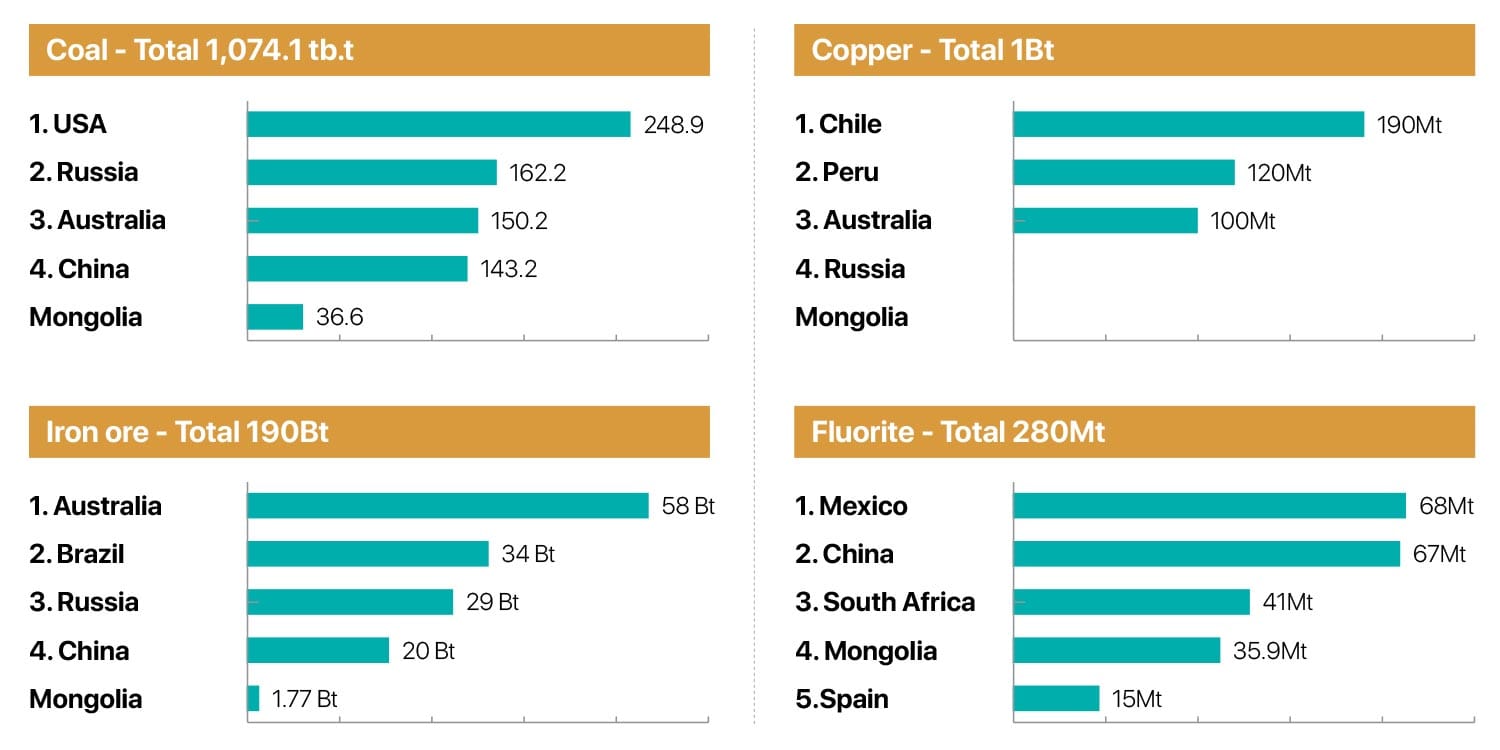Mongolia is a resource-rich developing country, with over 8,000 known occurrences of more than 80 types of mineral deposits identified across 1,170 registered deposits. The International Monetary Fund, an international financial organization with 189 member countries, identifies Mongolia as one of the 29 resource-rich developing countries due to its richness in natural resources.
MONGOLIA’S POSITION IN THE GLOBAL MINING MARKET: MINERAL RESERVES (AS OF 2022)
Source: MIMR, National Geological Survey, MRPAM, Mongolian Customs General Administration, U.S. Geological Survey
MINING CONTRIBUTION TO MONGOLIA’S ECONOMY (AS OF 2024)
Source: Ministry of Finance, NSO, Customs General Administration
EXPORT BREAKDOWN (AS OF 2024)
MINING CONTRIBUTION TO MONGOLIA’S ECONOMY (AS OF 2024)
Source: The National Statistical Office of Mongolia
2024 Mineral Export Volume by Type
Source: NSO




